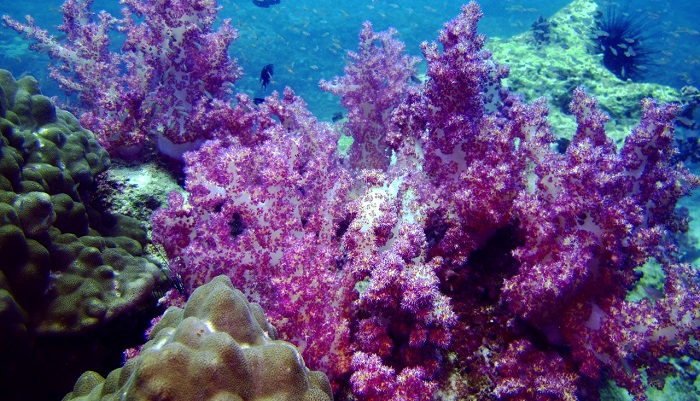
Muscat: The Daymaniyat Islands Nature Reserve in South Al Batinah Governorate is a tourist destination for visitors and diving enthusiasts.
The Daymaniyat Islands Nature Reserve is a natural treasure due to its biodiversity, geography, and natural ingredients. The reserve is distinguished by its picturesque landscapes, which are of national and regional importance.
The reserve is an archipelago that includes 9 islands off the coast of the Wilayats of Seeb and Barka, represented by (Daymaniya, Hayut, Jabal al-Kubr, Qafsiya, al-Ghurfa, al-Lumiyah, Qasma, Joun, Awlad Joun). The area of the reserve is 302 square kilometres.
The reserve consists of limestone rocks and coral reefs, and there are rocky slopes sloping towards the sea. These slopes extend into the water at a depth of 20 to 25 meters. From the south, there are shallow sandy cliffs, surrounded by a prominent coral range.
The Daymaniyat Islands Nature Reserve is characterised by biodiversity, as there are 15 species of wild plants, which contribute to making the islands a habitat for birds.
The coral reefs on the beaches of the reserve also vary according to their places of growth, some of which grow on sandy areas, or on broken coral, and among the most prominent types of coral reefs that abound in the reserve: cauliflower coral, tabletop coral, soft dendritic coral, primrose coral, hedgehog coral, Cerebral coral.
Mohammed bin Nasser Al-Saadi, Director of the Department of Natural Reserves at the Environment Authority, said: "The islands are a strategic location for migratory birds such as the eagle and the sooty falcon, and thousands of birds migrate during the breeding season, such as white egrets, gray egrets, ducks of all kinds, seagulls, terns, and some red-bellied tropical birds."
"Sea turtles also use the Daymaniyat Islands Reserve for nesting and laying eggs every year, including porpoises and green turtles, as they number approximately 300 annually, " Al-Saadi added.
"In the surrounding waters of the reserve, there are a number of species of marine mammals, such as bottlenose dolphins and spinner dolphins, as well as a number of whales such as humpback, shark, and black-head whales. Where the visitor to the reserve can see dolphins and whales of all kinds, in addition to that, visitors to the reserve can enjoy the clear blue waters of the islands, and look at rare fish."
Al-Saadi pointed out that invertebrates in the reserve play a key role in completing the food chain, including: crabs, jellyfish, worms and molluscs. In addition, two types of reptiles live in the reserve, which are skinks and geckos.
About the statistics of visitors in the Daymaniyat Islands Nature Reserve; Al-Saadi explains that the number of visitors to the reserve during the last five years amounted to 216,000, or approximately 39,000 visitors annually, while it did not exceed 17,000 visitors annually before the past five years.
"The indicators show that the highest number of visitors is expected to be recorded, prompting the Environment Authority to make more efforts to protect the natural components in the presence of these numbers of visitors."
"The Authority also praises the awareness of tourism companies and diving companies operating within the reserve, and is keen to ensure that visitors to the reserve get the best experience by visiting the reserve and seeing its natural components," Al-Saadi said.
Visitors to the reserve can engage in fishing, tourism, diving and camping activities, after obtaining an entry permit to the reserve to practice the aforementioned activities.